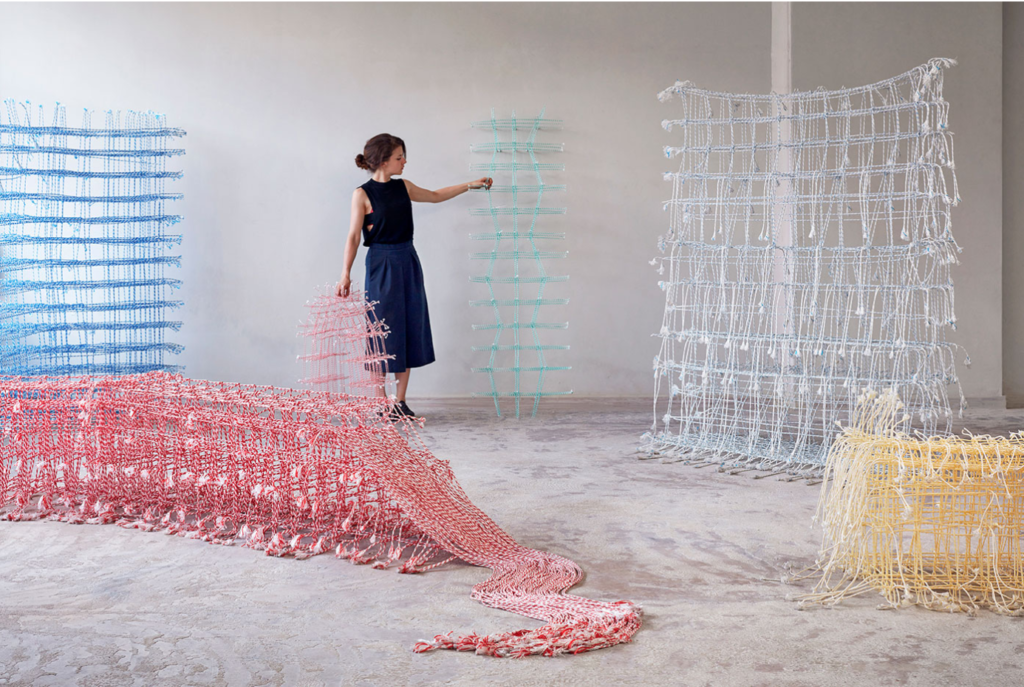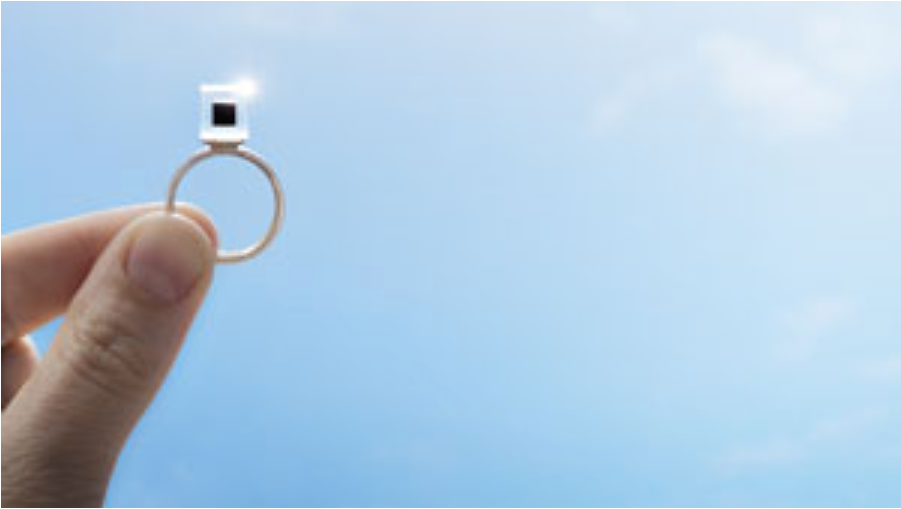Design Transfigured/Waste Reimagined opens at Georgetown University Art Galleries
Posted in Announcements In the News News

September 20, 2019 – Georgetown University is pleased to present Design Transfigured/Waste Reimagined, the first exhibition to recognize a fresh approach to addressing the current state of our depleted and polluted environment; an extreme and inventive kind of upcycling. In a religious context, transfiguration is “a complete change of form or appearance into a more beautiful or spiritual state.” Waste is overtaking natural resources, but these 30 pioneering international designers and studios—from Asia, Latin America, and Europe—consider it a resource to reclaim and radically transform into useful products, providing a new direction in design.
Dutch Invertuals, an innovative design studio, based in Eindhoven, Netherlands and known internationally for their creative work in the realms of architecture, design, and curatorial projects have designed the exhibition. The exhibition platforms, pedestals, and seating are being fabricated from an innovative building material sourced from textile industry waste and manufactured in Denmark by REALLY; REALLY Solid Textile Board was developed by exhibiting designer, Christien Meindertsma. That so many of the included designers are recent graduates or faculty of design academies and universities is evidence of a shift in the world of design and design education, from function at the service of aesthetic considerations to socially responsible, environmental amelioration. Designers who partner with material scientists and chemists, steered by ethical concerns, created the exciting, inventive works that comprise this groundbreaking exhibition.
Unexpected Materials on Exhibit

Over 40 works are being presented in the Maria & Alberto de la Cruz Art Gallery and the Lucille M. and Richard F. X. Spagnuolo Art Gallery. From the detritus of the pineapple industry, a metallic fabric has been created called Piñatex out of which Dutch fashion designer Liselore Frowijn and Italian designer Laura Strambi made striking fashions. Waste from coconut crops finds form in a line of stylish purses designed by Malai in India. Compressed smog particles fill Dutch Daan Roosegaarde’s renowned Smog Free Ring. Simón Ballen Botero extricates pollutants from the groundwater sullied by the gold mining industry in Colombia to create gleaming patinas on glass vessels. Dutch Nienke Hoogvliet harvests toilet paper from the sewage system that she reworks into furniture. Japanese Kosuke Araki couples historic methods of lacquering with new technologies to make dishes from food waste. Hair is the main material for the United Kingdom’s Oksana Bondar and Swine Studio when making furniture and accessories.
Dutch Invertuals, an innovative design studio, based in Eindhoven, Netherlands and known internationally for their creative work in the realms of architecture, design, and curatorial projects have designed the exhibition. The exhibition platforms, pedestals, and seating are being fabricated from an innovative building material sourced from textile industry waste and manufactured in Denmark by REALLY; REALLY Solid Textile Board was developed by exhibiting designer, Christien Meindertsma. That so many of the included designers are recent graduates or faculty of design academies and universities is evidence of a shift in the world of design and design education, from function at the service of aesthetic considerations to socially responsible, environmental amelioration. Designers who partner with material scientists and chemists, steered by ethical concerns, created the exciting, inventive works that comprise this groundbreaking exhibition.
Guest Curators Collaborate with Director Al Miner
The exhibition is organized by Georgetown University Art Galleries, and guest curated by Ginger Gregg Duggan and Judith Hoos Fox of c2-curatorsquared, an award-winning team known for their provocative curatorial work in contemporary art and design. According to Al Miner, Founding Director/Chief Curator of Georgetown University Art Galleries, “we are incredibly proud to present this innovative exhibition that supports Georgetown University’s long-standing commitment to advancing social justice and global initiatives and inspiring change. The surprising works on view will challenge preconceived notions of the artist/designer’s role in society and their ability to impact our world. The show will also be a springboard for interdisciplinary exchange bringing many of the University’s intellectual assets to a new audience through a related public engagement series wedding the arts with environmental studies, literature, theology and other themes.”
Design Transfigured/Waste Reimagined marks the first time a Georgetown University Art Galleries exhibition will go on tour; the Scottsdale Museum of Contemporary Art, Arizona will host the show from February 1 – May 17, 2020. Funding is generously supported by organizations including the Georgetown University 2019 Laudato Si’ Fund, Creative Industries Fund NL, and the Netherland-America Foundation; additionally, this program is supported as part of the Dutch Culture USA program by the Consulate General of the Netherlands in New York.
Special Panel Discussion Moderated by Marra
Design Transfigured/Waste Reimagined will open with a public reception on October 2 from 6:00 to 8:00 p.m. A series of free, multidisciplinary programs ranging from film screenings to public dialogues will expand upon the themes of the exhibition. The first program on October 3 at 6:00 PM will be a panel discussion including exhibition designers, a curator, and moderated by the director of the Georgetown Environmental Initiative and Laudato Si’ Professor of Biology and the Environment, Peter Marra. Details on further programs are listed on the gallery’s website.
